KØOV's Photo Album
of the 2011 USA and IARU-R2 ARDF Championships
Page 2 of 5

ARDF championships in Albuquerque have always had bus transportation to the venues. It's important for everyone to arrive and depart at the same time, parking at the sites is often quite limited, and buses will provide rapid evacuation of the area in case of a fire. Early on Saturday, the luxury coach headed out to an unknown location. It turned out to be just north of Los Alamos, the town best known as the site of the secret Manhattan Project during the second world war.

From the bus, we watched some balloonists practicing for the Albuquerque International Balloon Festival in the first week of October.
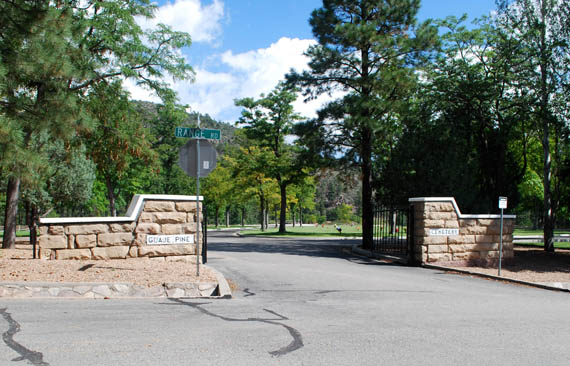
The coach went through downtown Los Alamos to the northernmost part of the town and onto Range Road, just past Guaje Pine Cemetery. (Insert your own cemetery joke here.) There it stopped, next to a porta-potty that had been rented by the organizers for the occasion.

Upon arrival, everyone put on their numbered bibs. The Germans formed a conga line to make it easy.
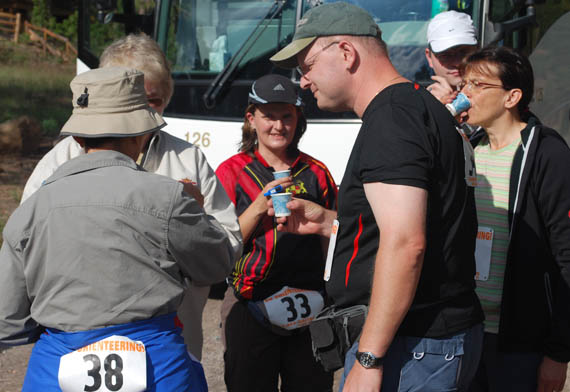
In the high altitude, it was important to avoid dehydration. There were plenty of electrolyte replacement drinks and water to get everyone ready for the woods.
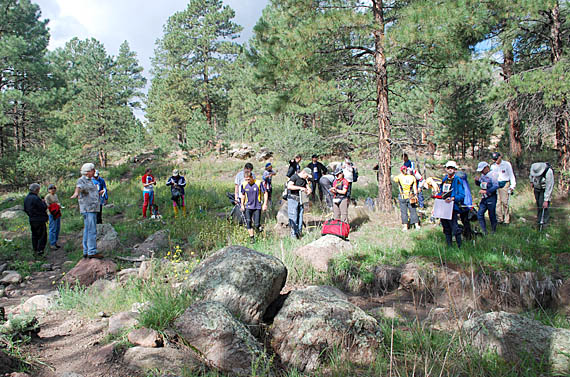
Beautiful country, isn't it!
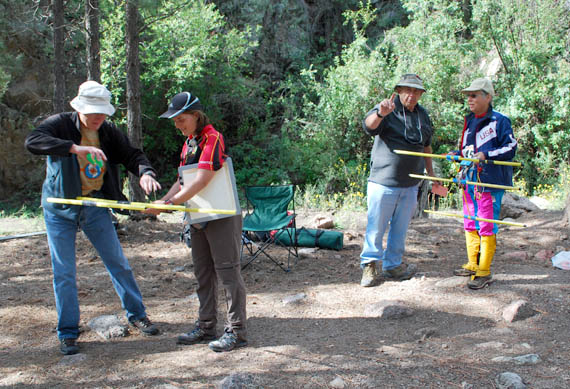
Receivers are impounded so that nobody will turn them on before starting. Volunteers from Los Alamos Amateur Radio Club (LAARC) helped competitors mark their two-meter gear and put it on the tarp.
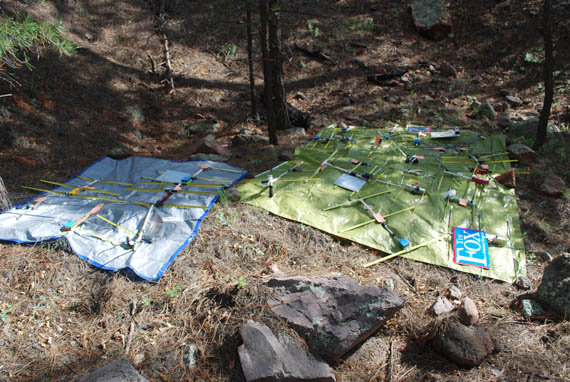
It took two tarps to hold all of the gear.
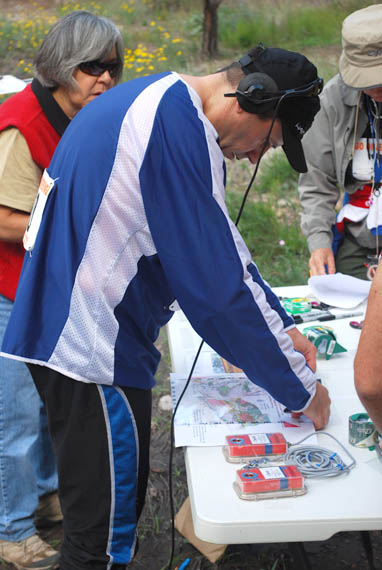
Ten mimutes before starting, Nicolai Mejevoi prepares his 11 x 17 inch map for the two-meter hunt. On the edge of the table are the CLEAR and CHECK controls for the electronic scoring system. They clear the competitors' "e-sticks" of previous events' data.
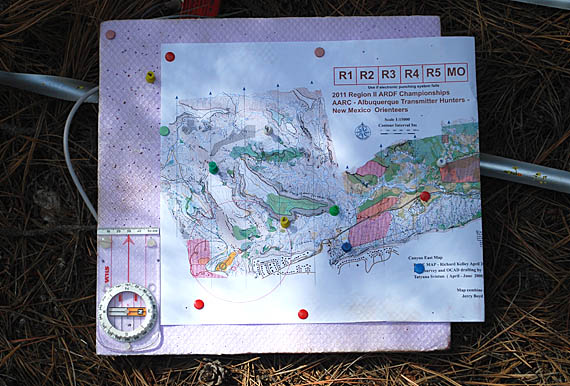
The German competitors preferred corkboards like this for holding their maps. Pushpins mark estimated transmitter locations.
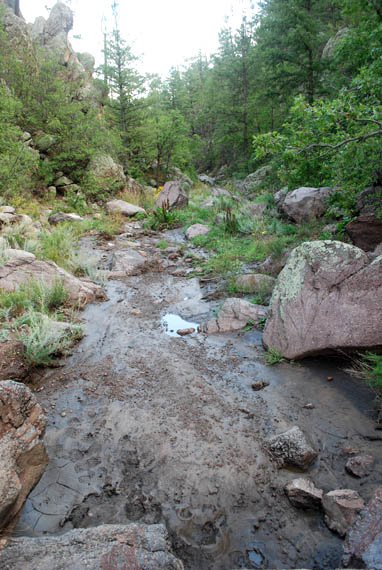
Have you ever seen a starting corridor like this? Hunters faced this canyon as they awaited the starting tones.
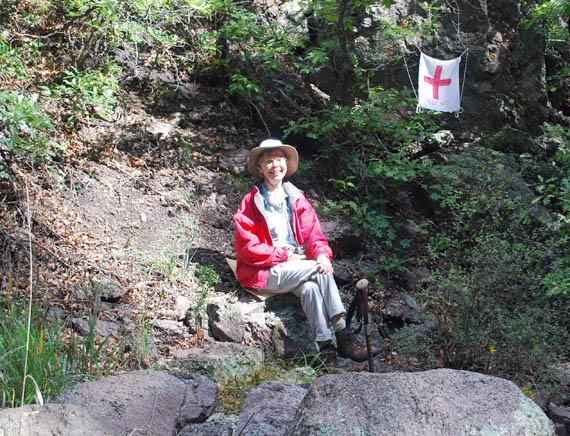
Joan Rogers KC5BPI of LAARC helped with First Aid on Saturday. First, she stationed herself in the middle of the rocky starting corridor.
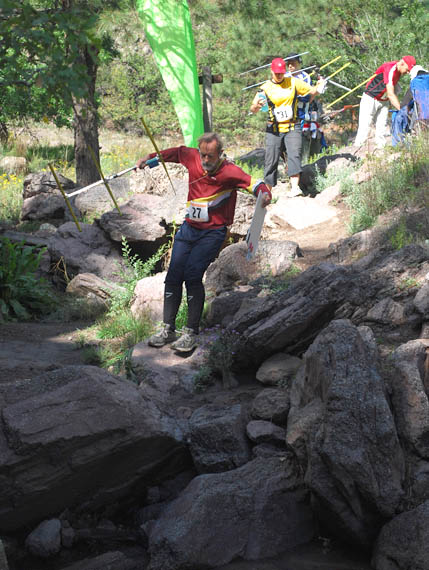
You had to be sure-footed to get from the starting line down into the corridor at high speed. Fortunately, nobody fell along the way. In this group, Bob Cooley KF6VSE was first.
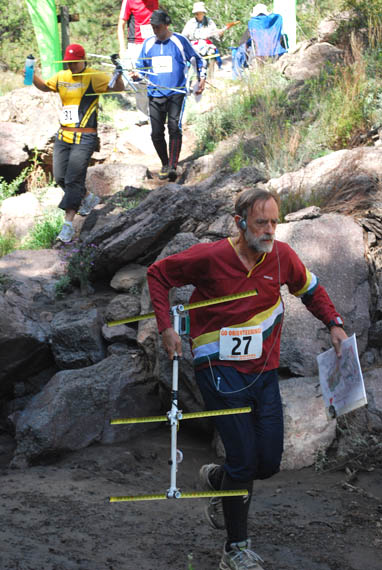
It didn't matter who was first into the corridor, because each competitor's timing didn't start until he or she punched the starting control.
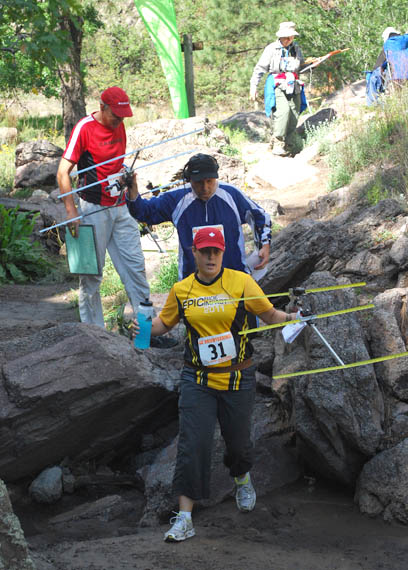
Here come the rest of the Number 1 group: Stevie Van Skiver VE7SMX, Nicolai Mejevoi and Nick Roethe DF1FO. Behind them is Kuon Hunt KB7WRG, who suffered a fall earlier in the day and decided to skip the two-meter hunt.
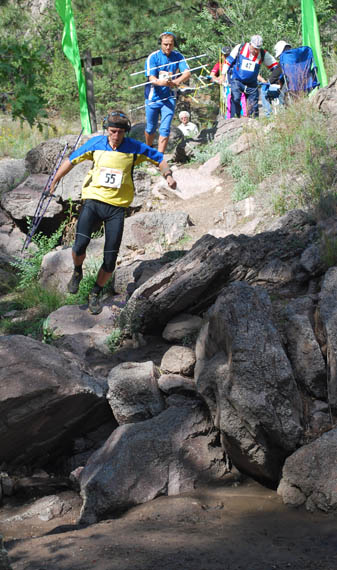
The two Ukraininan competitors were the fastest on the rocks. Volodymyr Gniedov is followed by Kostiantyn Zolochevskyi.

Vadim Afonkin KB1RLI of Boston, Massachusetts holds his antenna high and avoids the rocks in the corridor.
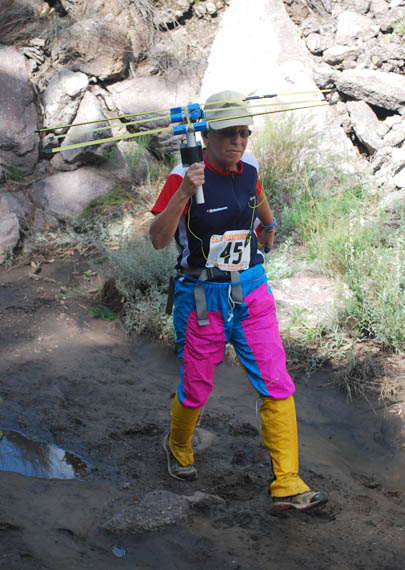
Ruth Bromer WB4QZG of Cary, North Carolina was the only competitor who had the two-meter RDF yagi mounted on a mast.
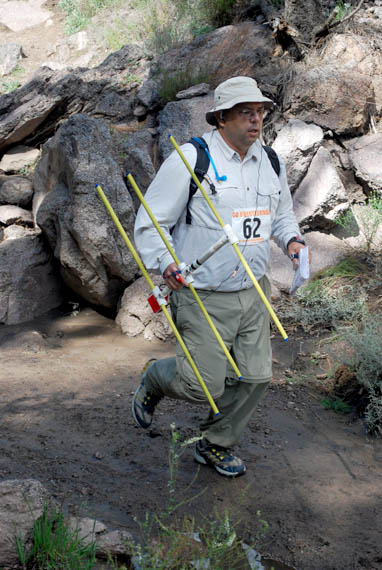
Matthew Robbins AA9YH of Cincinnati, Ohio.

